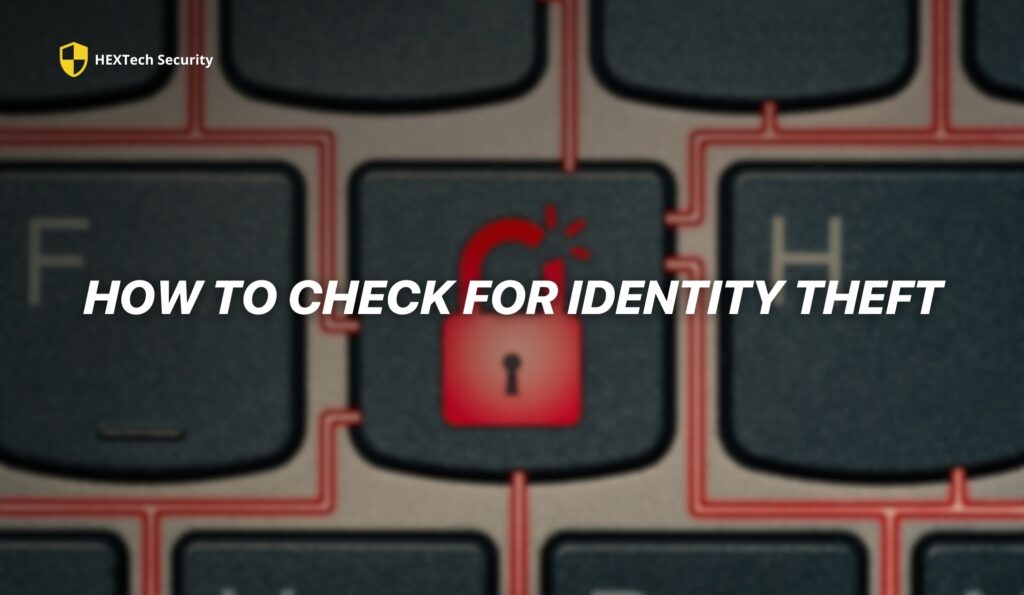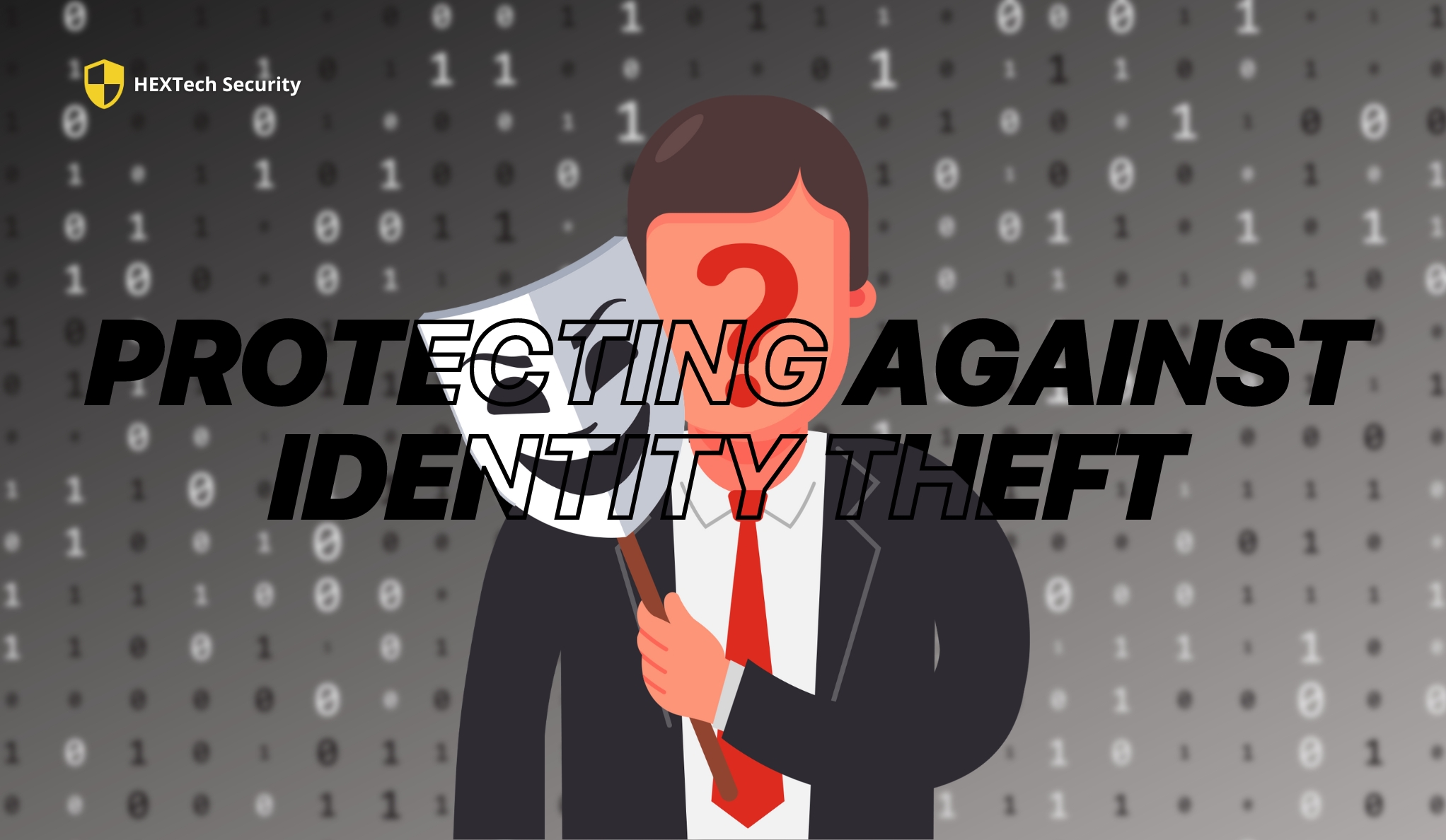Identity theft is an increasingly prevalent issue, impacting millions globally. It involves unauthorized access and use of personal information for fraudulent purposes. This guide will explain the various types of identity theft, such as social security and medical identity theft, and provide practical solutions for prevention, reporting, and protection.
Identity Theft: Understanding the Different Types
Identity theft is when someone illegally acquires and uses another person’s personal data for fraud or deception, often for financial gain. This crime can take various forms, each impacting victims in different ways. Being aware of these types can help in recognizing potential threats and taking proactive measures for protection. Some of the most common forms of identity theft include:
- Financial Identity Theft: The most prevalent type, occurring when someone uses another person’s personal information like their name, Social Security number, or credit card details to make purchases, withdraw money, or open new accounts.
- Social Security Identity Theft: This involves using someone else’s Social Security number to gain employment, access government benefits, or conduct other financial transactions.
- Medical Identity Theft: An identity thief uses someone else’s identity to receive medical care, buy prescription drugs, or make false claims to insurance companies. This can lead to incorrect medical records and significant financial liabilities for the victim.
- Criminal Identity Theft: Occurs when a criminal impersonates another individual during an arrest or a criminal incident, potentially leading to a criminal record for the victim for offenses they did not commit.
- Child Identity Theft: Children’s Social Security numbers are targeted because they are less likely to be monitored. This can remain undetected for years and may only be discovered as the child grows up and starts using their credit.
- Tax Identity Theft: Happens when someone uses another person’s Social Security number to file a tax return and claim a fraudulent refund.
- Synthetic Identity Theft: A sophisticated fraud where criminals combine real and fake information to create a new identity, like using a real Social Security number with a fake name.
- Account Takeover Identity Theft: Involves gaining access to a person’s existing accounts, often through phishing or malware, and then making unauthorized transactions or changes.
- Senior Identity Theft: Older adults are targeted due to perceived vulnerabilities. Thieves might use their personal information to access retirement funds, social security benefits, and more.
Each of these examples shows how identity thieves exploit personal information for unlawful gain. Knowing about these types of identity theft helps you stay alert. It’s crucial to keep your personal information, like your Social Security number, bank account details, and personal identification numbers (PINs), secure. Always be cautious, especially online, and monitor your financial statements to catch any unusual activity early.
Identifying Risks and Vulnerabilities
Understanding the risks and vulnerabilities that lead to identity theft is crucial for effective protection. Identity thieves often exploit gaps in personal or organizational security systems. Here are key areas where individuals are most at risk:
- Online Activity: The internet is a common playground for identity thieves. Risks include unsafe websites, phishing emails, and unsecured Wi-Fi networks. Sharing too much personal information on social media can also make you an easy target.
- Physical Documents: Personal documents thrown away without shredding, lost wallets, and unsecured mailboxes are simple yet common ways for thieves to access your personal information.
- Data Breaches: Companies and organizations sometimes experience security breaches, leading to the exposure of personal data. These breaches can provide a treasure trove of information for identity thieves.
- Skimming Devices: These are devices installed on ATMs and card readers to capture card information. They are hard to notice but can be a significant risk, especially in high-traffic areas.
- Social Engineering: Thieves often use manipulation tactics to trick individuals into revealing sensitive information. This could be through phone calls, emails, or direct interaction.
- Weak Passwords: Using simple or repeated passwords across different accounts increases vulnerability. Cybercriminals use various tools to crack weak passwords and gain access to personal accounts.
By identifying these risks, you can take proactive steps to safeguard your personal information. This includes being cautious online, properly disposing of sensitive documents, regularly monitoring financial accounts, and staying informed about potential data breaches. Strong, unique passwords and a general awareness of social engineering tactics are also vital defenses against identity theft.
Preventing Identity Theft

To effectively prevent identity theft, it’s essential to adopt a range of protective strategies. These methods focus on securing personal information and reducing the risk of unauthorized access:
Strengthen Personal Information Security:
- Secure Storage: Keep personal documents like your Social Security card, passport, and financial statements in a safe place, preferably in a locked cabinet or safe.
- Shred Sensitive Documents: Before disposing of any documents that contain personal information, shred them. This includes bank statements, credit card offers, and old IDs.
Enhance Online Safety:
- Strong Passwords: Use complex and unique passwords for different online accounts. Consider using a password manager to keep track of them.
- Two-Factor Authentication: Whenever possible, enable two-factor authentication on your online accounts for an added layer of security.
- Beware of Phishing: Be cautious about emails or messages that ask for personal information or direct you to websites where you need to enter personal details.
- Secure Networks: Avoid using public Wi-Fi for transactions or accessing sensitive information. Use a virtual private network (VPN) for better security.
Financial Vigilance:
- Regular Monitoring: Check your bank and credit card statements frequently for any unauthorized transactions.
- Credit Reports: Regularly review your credit reports from major credit bureaus to spot any unusual activity or unauthorized accounts.
- Credit Freeze: Consider placing a credit freeze with credit bureaus if you suspect you’re at risk of identity theft. This prevents criminals from opening new accounts in your name.
Stay Informed:
- Educate Yourself: Keep up with the latest information on identity theft tactics and prevention measures.
- Fraud Alerts: Set up fraud alerts with your bank and credit card companies to receive notifications of unusual activities.
By implementing these steps, you can significantly reduce your vulnerability to identity theft. It’s about being proactive, cautious, and informed in the handling of your personal and financial information.
How to Report Identity Theft
If you fall victim to identity theft, it’s vital to act swiftly to minimize damage. Reporting the theft quickly can help in stopping the thief and possibly recovering your identity. Here’s a step-by-step guide on how to report identity theft:
- Contact the Fraud Departments of Major Credit Bureaus:
- Experian, TransUnion, and Equifax are the three major credit bureaus. Report the theft to them and request a fraud alert on your credit reports. This alert notifies creditors to verify your identity before opening new accounts or making changes to existing accounts.
- Report to the Federal Trade Commission (FTC):
- The FTC handles complaints about identity theft. You can report online at IdentityTheft.gov or call their hotline. The FTC will provide you with an Identity Theft Affidavit, a key document in the recovery process.
- File a Report with Local Law Enforcement:
- Filing a police report is important, especially if you know the identity thief or if the thief used your name in interaction with the police. Bring your FTC Identity Theft Affidavit, a government-issued ID, proof of your address, and any proof of the theft to the police station.
- Notify Your Financial Institutions:
- Contact your bank and credit card companies to inform them about the identity theft. Check for any unauthorized transactions and ask to freeze or close compromised accounts. They can also issue new cards and account numbers.
- Change Passwords and Security Questions:
- Update the passwords and security questions for all your online accounts, especially those related to banking and personal information.
- Keep Detailed Records:
- Document all your actions, including phone calls, emails, and in-person visits. Note the time, date, and a brief description of the conversation. Keep copies of all letters and official documents.
- Continued Monitoring:
- After reporting identity theft, continue to monitor your financial statements and credit reports regularly for signs of new fraudulent activity.
By following these steps, you can effectively report and start recovering from identity theft. It’s a process that requires patience and persistence, but taking these actions is crucial for regaining control of your personal information.
How to Check for Identity Theft

Regularly checking for signs of identity theft is essential for early detection and prevention. Here are practical steps you can take to monitor your information and identify any suspicious activity:
- Review Credit Reports:
- Obtain your credit reports from the three major credit bureaus: Experian, TransUnion, and Equifax. You’re entitled to one free report from each bureau every year. Look for unfamiliar accounts, inquiries, or debts that you don’t recognize. These can be signs of someone else using your identity.
- Monitor Bank and Credit Card Statements:
- Regularly check your bank and credit card statements for transactions you don’t recognize. Sometimes, small, unexplained charges can be a sign of a thief testing the waters before making larger purchases.
- Watch for Missing Mail:
- Be alert if you stop receiving important mail. Thieves may change your mailing address to hide fraudulent activities on your accounts.
- Check Your Medical Statements:
- Review statements from your health insurance provider. Look for charges for medical services or equipment you didn’t use. This could indicate someone is using your identity to receive medical services.
- Pay Attention to IRS Notices:
- If you receive a notice from the IRS indicating that more than one tax return was filed in your name, or you have income from an employer you don’t work for, this could be a sign of identity theft.
- Be Alert to New Accounts or Denials of Credit:
- If you receive information regarding new accounts you didn’t open or if you’re unexpectedly denied credit, investigate immediately. These could be indications that someone else is using your identity.
- Beware of Suspicious Activity Online:
- Notice if your email or social media accounts show signs of unauthorized access or if there are changes you didn’t make. This can include new passwords or added contact information.
By regularly carrying out these checks, you can spot the signs of identity theft early. Quick detection is crucial for limiting the damage and starting the recovery process as soon as possible. Remember, staying vigilant and informed is your best defense against identity theft.
Step-by-Step Guide to Protecting Yourself from Identity Theft

Protecting yourself from identity theft involves a series of proactive steps to secure your personal information. This guide outlines practical measures to reduce the risk of becoming a victim:
Step 1: Educate Yourself About Identity Theft Risks:
- Stay informed about the latest methods identity thieves use. This knowledge helps you be more vigilant and recognize potential threats.
Step 2: Secure Your Personal Information
- Keep sensitive documents like your Social Security card and birth certificate in a safe place, like a locked file cabinet or a safe.
- Shred documents containing personal information before disposing of them.
Step 3: Practice Safe Online Habits
- Use strong, unique passwords for each of your online accounts. Consider using a password manager for better security and management.
- Be cautious with the information you share on social media. Oversharing personal details can make you an easy target.
- Always update your software and devices to the latest security versions.
Step 4: Monitor Your Financial Statements Regularly
- Regularly review your bank and credit card statements. Look for any charges you don’t recognize, no matter how small.
Step 5: Review Your Credit Reports:
- Check your credit reports annually from each of the three major credit bureaus. Look for unfamiliar accounts or inquiries.
Step 6: Set Up Fraud Alerts and Credit Freezes if Necessary:
- Place a fraud alert on your credit reports if you suspect you’re a victim of identity theft. Consider a credit freeze to restrict access to your credit reports.
Step 7: Be Wary of Phishing Attempts:
- Be cautious of emails, calls, or texts asking for personal information. Never click on links or download attachments from unknown sources.
Step 8: Secure Your Mail:
- Use a locked mailbox. Pick up your mail promptly, and send outgoing bills or sensitive information from a post office or secure mailbox.
Step 9: Use Two-Factor Authentication:
- Wherever possible, enable two-factor authentication on your accounts. This adds an extra layer of security beyond just a password.
Step 10: Be Careful with Public Wi-Fi:
- Avoid accessing sensitive information or making transactions when connected to public Wi-Fi networks. Use a VPN for a more secure connection.
Step 11: Respond Quickly if Your Information is Compromised:
- If you suspect your identity has been stolen, act immediately. Contact your bank, credit card companies, and credit bureaus to report the theft.
By following these steps, you can significantly enhance your protection against identity theft. It’s about being cautious, staying informed, and taking proactive measures to safeguard your personal and financial information.
Do Police Investigate Identity Theft?
Yes, police do investigate identity theft. The extent and nature of their investigation can vary based on the severity and complexity of the case. Reporting identity theft to the police initiates a formal legal process, which is crucial for recovery efforts.
The first step is to file a report with your local police department. This official report serves as a crucial document in your recovery process. It’s important to provide as much evidence as possible, including details about the theft, unauthorized transactions, and communications from financial institutions or credit bureaus.
After reviewing the report, the police decide on the next steps. They may investigate further, especially if there’s clear evidence of who committed the crime or if it’s part of a larger pattern of fraud. The investigation might involve tracking down the thief, working with cybercrime units, and collaborating with other law enforcement agencies.
Conclusion
The threat of identity theft is a constant challenge in our digital age, but by taking informed and proactive steps, you can greatly reduce your risk. It’s essential to stay vigilant, regularly monitor your personal and financial information, and adopt secure practices both online and offline. Remember, the key to protecting yourself lies in awareness, caution, and timely action. By educating yourself and implementing the strategies outlined in this guide, you can create a strong defense against the ever-evolving tactics of identity thieves.
In a world where personal information is increasingly digital and accessible, taking responsibility for your data security is more important than ever. Should you ever suspect that your identity has been compromised, quick response and reporting are crucial for minimizing impact and starting the recovery process. With consistent vigilance and the right preventive measures, you can maintain control over your personal information and safeguard your identity against theft.
Additional Resources
For further information and assistance on identity theft protection and recovery, the following resources can be invaluable:
- Federal Trade Commission (FTC) – Identity Theft:
- Website: IdentityTheft.gov
- This is the U.S. government’s one-stop resource for identity theft victims. It offers detailed guidance on reporting and recovering from identity theft, including how to use an Identity Theft Report to get fraudulent information removed from your credit reports.
- AnnualCreditReport.com:
- Website: AnnualCreditReport.com
- This is the only authorized website for free credit reports as mandated by federal law. You can request a free credit report every 12 months from each of the three major credit bureaus: Equifax, Experian, and TransUnion.
- Consumer Financial Protection Bureau (CFPB):
- Website: Consumer Financial Protection Bureau
- The CFPB provides information on how to protect yourself from identity theft and what steps to take if your identity is stolen.
- Identity Theft Resource Center (ITRC):
- Website: Identity Theft Resource Center
- The ITRC offers toll-free, no-cost victim assistance to individuals impacted by identity theft.
- Social Security Administration (SSA):
- Website: Social Security Administration
- If your Social Security number is compromised, the SSA provides information on how to report identity theft and secure your SSN.
- Your Local Law Enforcement Agency:
- Contact your local police department if you need to file a report for identity theft. They can provide guidance on the necessary steps and documentation required in your locality.
- Cybersecurity & Infrastructure Security Agency (CISA):
- Website: CISA – Protecting Against Cyber Threats
- CISA offers resources and tips on how to protect yourself from cyber threats, including identity theft.
Each of these resources provides valuable information and tools to help you understand, prevent, and respond to identity theft. They can be a great help in keeping your personal information secure and in navigating the recovery process if your identity is compromised.








